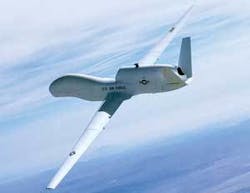By John McHale
CHARLOTTESVILLE, Va. - Industry reaction is mixed on last month’s announcement of board supplier GE Fanuc Embedded Systems’ intention to acquire SBS Technologies, which would create an embedded market giant able to go head-to-head with Curtiss-Wright Controls Embedded Computing in Leesburg, Va.
GE Fanuc of Charlottesville, Va., a unit of General Electric Co., and SBS of Albuquerque, N.M., both design open-architecture embedded computers for commercial, communications, and government applications. GE Fanuc and SBS officials declined to comment for this story beyond their official announcements.
Ray Alderman, executive director of the VME International Trade Association (VITA) in Fountain Hills, Ariz., says the merger brings a much-needed balance to the embedded market, largely because it confronts Curtiss-Wright with a formidable competitor of its own size.
The proposed acquisition of SBS Technologies by GE Fanuc Embedded Systems will reconfigure the supplier base of embedded electronic systems for new military systems like the Global Hawk unmanned aerial vehicle, shown above.
Meanwhile, small companies such as AiTech in Chatsworth, Calif., and BittWare in Concord, N.H., can carve out little niches beyond the focus of the bigger companies, Alderman says. Mid-size companies like Radstone Embedded Computing in Towcester, England, and Mercury Computer Systems in Chelmsford, Mass., now must figure out their roles in this market, he says.
Tom Quinly, president of Curtiss-Wright Controls Embedded Computing also sees the consolidation and competition as good. “It’s a very good trend for the defense industry. It shows that the adoption of the COTS [commercial-off-the-shelf] approach continues to strengthen. Consolidation also reflects the natural maturization and positive growth of our market and reinforces the strength of our value proposition. And stronger COTS providers bring more financial clout and ensure the stability that military system integrators are looking for.”
The consolidation “is a consequence of the marketplace and the need for the larger companies to maintain control of guaranteed product availability and pricing,” says Jerry Krazner, vice president of market intelligence for Embedded Market Forecasters in Framingham, Mass. “Also for the larger companies that deal in the larger military marketplace, the need to protect themselves from the product interruptions and financial mishaps of suppliers.”
Radstone’s president, Peter Cavill, sees the acquisition’s influence changing over time. “In the short term, I would expect the impact on Radstone to be zero,” he says. “In the medium term, it is likely to be good for Radstone and other competitors of SBS-and bad for the industry. Inevitably, there will be some disruption to both SBS and GE’s operations as they rationalize all the overlapping products lines and resources. I’m looking forward to being able to hire some new talent from all the resumes that will soon be on the street. The side effects of the rationalization are bound to have a negative impact on some customers.
“Longer term, who knows? From the acquisitions they have made, GE appears to be pursuing a strategy of covering every embedded computing market segment and technology there is,” Cavill continues. “I thought Curtiss-Wright’s strategy of acquiring several nearly identical businesses was strange, but GE seems to be doing the same thing. They recently paid a very handsome price to acquire Condor Engineering-a 1553 specialist. They’ve now paid an even higher multiple to acquire SBS-which ‘wrote the book’ on 1553. A while ago they acquired RAMiX, a specialist in network interfaces and switches-another claimed SBS strength. They also own VMIC, a company that majors on Pentium-based VME and CompactPCI-again, a major overlap with SBS.
“I guess they are pursuing the old Jack Welch axiom-‘If you’re going to be in a market you need to be number one or number two.’ If they keep on buying, then, at least in terms of revenue I guess they may get there,” Cavill adds.
Cavill says the combined companies are very fragmented. “SBS was created from the acquisition of no fewer than 11 relatively small companies. Although these have long since been integrated and turned into centers of excellence, they are geographically spread across all four corners of the U.S. as well as having locations in Canada and Germany. GE-Fanuc Embedded Computing (or whatever they will call it) is now a conglomerate of 15 companies.”
One possible effect on the industry is to increase company valuations, Cavill says. GE Fanuc, he says, is prepared to pay whatever it takes to acquire the businesses it wants. “Although the price wasn’t published I believe they paid something like four times sales for Condor,” he says.
The merger might spark more consolidation by making other companies look for further acquisitions or mergers to be number one in the market, he adds. Much of this will depend on what GE’s strategy is going to be. They now have several companies, each of which has small market shares in several sectors-industrial control, telecommunications, and military. “Do they intend to try and take a leadership position in all these, or will they focus on just one? Perhaps a more pertinent question would be ‘is consolidation good for customers.’ Only a customer can answer that.”
VITA’s Alderman says he expects more consolidations in the embedded market this year and he also says GE may not be done. They have enough financial capital behind them to buy Curtiss-Wright if they wanted too, he adds.
At the time of this writing GE announced record earnings for the first quarter of this year-reportedly $4 billion, up 14 percent from the figure for the first quarter of 2005. The future looks bright.
More information on SBS is available at www.sbs.com. For more information on GE Fanuc, visit www.gefanuc.com/embedded.

